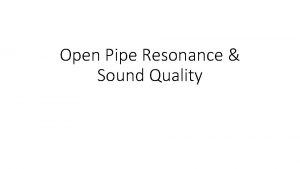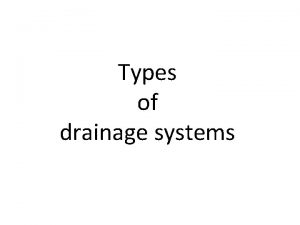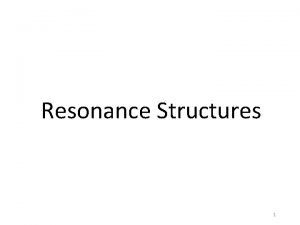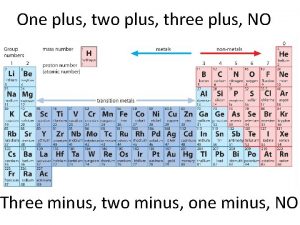Open Pipe Resonance Plus some examples Open Pipe











- Slides: 11

Open Pipe Resonance Plus some examples

Open Pipe Resonance • An open pipe resonator is a resonating tube with both ends open • The open ends have antinodes

Open Pipe Resonance • The minimum length of a resonating open pipe is one half the wavelength of the resonance frequency • Comparing open and closed pipes of the same length, the wavelength of the resonant sound for the open pipe will be half of that for the closed pipe

Open Pipe Resonance •

Example 1 • Find the relationship between the frequencies of an open and closed pipe of the same length with the same speed of sound

Example 2 • A soprano saxophone is an open pipe. If all keys are closed, it is approximately 65 cm long. Using 343 m/s as the speed of sound, find the lowest frequency that can be played on this instrument.

Example 3 • A glass pipe put inside a graduated cylinder filled with water will have a closed ending where the water starts. Using a 214 Hz tuning fork, the sound is loudest when 0. 4 m remains outside the water. Calculate the speed of sound.

• Video on what our lab will be like Friday (Monday if period 2, 4 and 8)

Harmonics • Open and closed pipes resonate at more than one frequency. • Musical instruments using pipe resonators produce sounds that contain more than one resonant frequency. • The lowest frequency is called the fundamental frequency. • Wave frequencies that are whole-number multiples of the fundamental are called harmonics.


• Do the handout • 4 problems, 4 pipes, 4 x 5 pts
 Pipe resonance
Pipe resonance Parallel flow heat exchanger
Parallel flow heat exchanger One pipe system and two pipe system
One pipe system and two pipe system They say it only takes a little faith
They say it only takes a little faith They say sometimes you win some
They say sometimes you win some Ice cream is a countable or uncountable noun
Ice cream is a countable or uncountable noun Contact forces
Contact forces Fire and ice diamante poem
Fire and ice diamante poem Some say the world will end in fire some say in ice
Some say the world will end in fire some say in ice Some may trust in horses
Some may trust in horses 영국 beis
영국 beis Jerusalem cite de dieu chant
Jerusalem cite de dieu chant




















